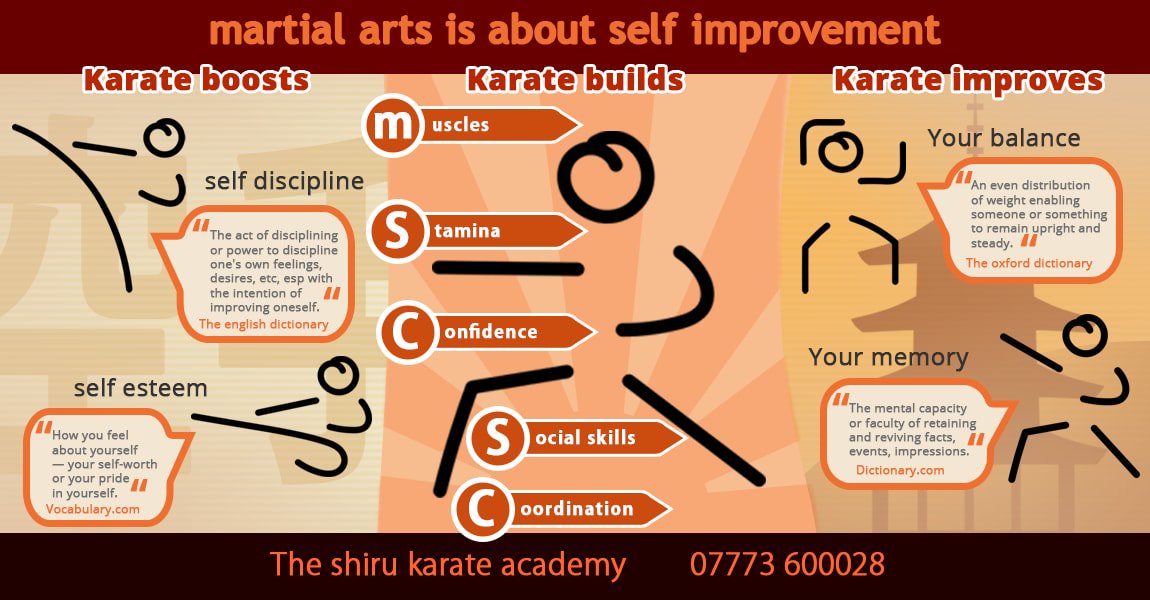The Chronicle And Growth Of Martial Arts: An Examination Of Its Historic Origins And Advancement Into Modern Techniques
The Chronicle And Growth Of Martial Arts: An Examination Of Its Historic Origins And Advancement Into Modern Techniques
Blog Article
Authored By-Bonner Sommer
Step into the globe of martial arts, where ancient beginnings and modern-day techniques clash in an electrifying journey of technique and self-discovery.
As you explore the history and evolution of this fascinating art kind, prepare to be mesmerized by the social impacts, technical advancements, and profound ideology that have formed it over centuries.
From the field of battles of ancient human beings to the training premises these days, martial arts have actually stood the test of time, constantly adjusting and growing.
Each strike, each activity, brings with it the weight of numerous years of custom and wisdom, passed down via generations. This is a story of durability, of warriors who sought not only physical prowess, yet also inner strength and consistency.
Join us on this exceptional expedition as we uncover the keys, the legends, and the transformational power of martial arts.
Get ready to be motivated, challenged, and permanently altered by the background and advancement of martial arts.
Social Influences on Martial Arts
As you check out the background and advancement of martial arts, you'll promptly uncover the interesting ways in which cultural influences have formed these battle strategies.
From the old civilizations of China and India to the a lot more recent growths in Japan and Brazil, martial arts have been heavily affected by the societies in which they stemmed.
For instance, Chinese martial arts, such as Martial Art and Tai Chi, are deeply rooted in the ideology of Taoism and the principle of Yin and Yang.
In contrast, Japanese martial arts, like Martial arts and Judo, reflect the samurai warrior practices and the values of self-control and honor.
Similarly, Brazilian martial art, Capoeira, combines aspects of African dancing and music, showing the cultural heritage of African slaves in Brazil.
These social influences not just provide each fighting style its distinct features however also supply a much deeper understanding of the historic and social contexts in which they advanced.
Technological Advancements and Martial Arts
With the rise of sophisticated weapons and ingenious training devices, you've had the ability to boost your abilities and adjust to the ever-changing battle landscape.
martial arts with knives have reinvented the way martial arts are exercised and taught. Virtual reality simulations now enable you to learn sensible combat situations without the threat of physical harm. bono's jkd and kajukenbo -speed video cameras capture every relocation, allowing you to assess and perfect your techniques. Wearable tools monitor your heart rate, breathing, and muscular tissue activation, supplying instantaneous comments on your performance.
Additionally, the growth of specific devices, such as resistance bands and dexterity ladders, has allowed you to enhance your rate, strength, and dexterity. These technological developments have not only made training more effective but have actually likewise pressed the limits of what is feasible in martial arts, permitting you to get to new heights in your method.
The Ideology and Concepts of Martial Arts
The approach and concepts of martial arts are deeply rooted fit your attitude and instilling discipline, focus, and respect in your method.
1. Way of thinking: Martial Arts teaches you to create a solid and resistant attitude. It enables you to overcome obstacles both on and off the mat, pushing your limits and persisting when faced with adversity.
2. Discipline: Martial Arts demands self-control and self-discipline. Via normal training and adherence to strict rules and techniques, you discover to manage your impulses and create a solid job principles.
3. Emphasis: Martial Arts requires intense focus and focus. By training your mind to be present in the minute, you improve your capacity to respond swiftly and properly throughout fight situations.
4. Respect: Martial Arts highlights regard for oneself, instructors, educating partners, and opponents. how many kids per instructor martial arts class shows you to value the skills and experiences of others, promoting a feeling of friendship and gamesmanship.
Conclusion
Congratulations on completing your trip via the fascinating globe of martial arts! Throughout this exploration, you have actually experienced the abundant history and exceptional development of these fight methods.
From their ancient beginnings to the modern strategies we see today, martial arts have been formed by cultural impacts.
The combination of innovation has additionally played a substantial role in changing the way martial arts are taught and exercised in the here and now day.
Nonetheless, it is essential to remember that martial arts are more than simply physical combat. They include profound philosophies and leading concepts that exceed the mere act of combating.
Take a moment to assess this obsolete adventure and appreciate just how the tradition of martial arts continues to thrive in the present, transcending time and borders.
